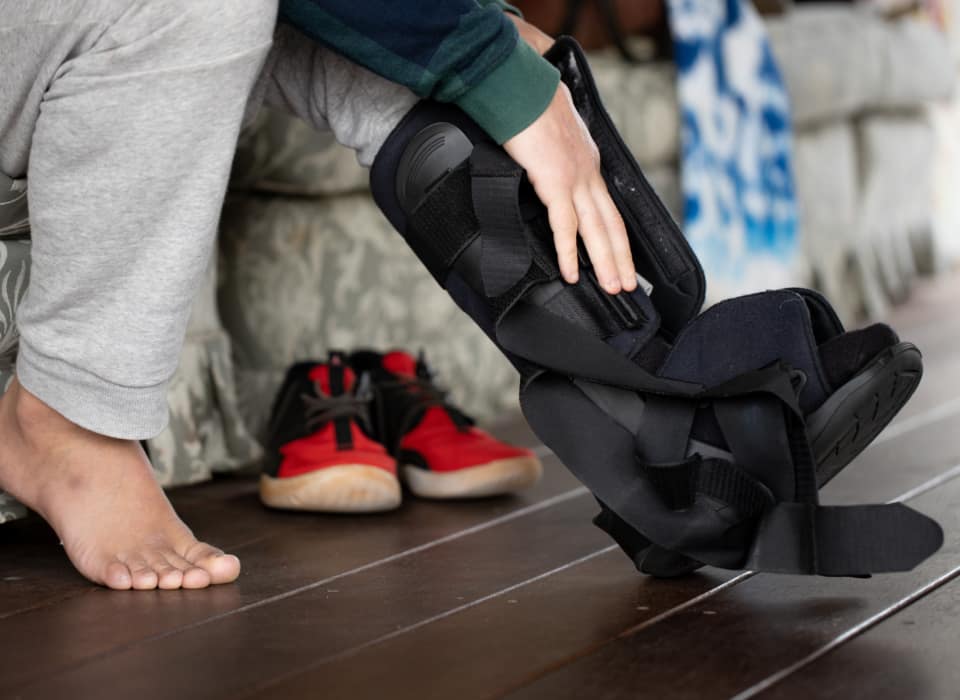Chronic ankle instability
What is ankle instability?
An ankle sprain, or rolling your ankle, is a common injury and it occurs when the ligaments that support your ankle joint are torn or stretched. You will experience a sense of instability, which is annoying and definitely when it happens frequently.
Chronic ankle instability or recurring ankle instability can be particularly problematic when engaging in sports or physical activities, as you feel you can’t trust your ankle and it’s holding you back.

The severity of an ankle sprain can vary from grade 1 which is mild ligament stretching to grade 2 (partial tearing) or grade 3 which is complete tearing.
Chronic ankle instability can result in cartilage damage, due to the excessive stress placed on the cartilage surface, leading to wear and tear over time.
Ankle instability surgery Perth
How is ankle instability treated?
When your ankle is sprained the ligaments are torn but in about 50-60% of all cases, simple rest, ice, compression and elevation will settle symptoms very quickly.
Other first-line treatments for ankle instability are:
- Physiotherapy: A rehab program to help strengthen your muscles around the ankle,
- Taking over-the-counter pain and anti inflammatory medication,
- Wearing an ankle brace or using tape to support your ankle and provide extra stability.
Ankle ligament repair is rarely needed for low level sprains(grade I-II).
When to see an ankle specialist?
When you experience chronic instability and attempts to repair your ankle are unsuccessful, you may require ankle reconstruction. Ankle reconstruction is a highly successful procedure. Once you have rehabilitated from your surgery, it is uncommon to see a patient needing a second reconstruction later down the track.

It’s important to mention that surgical treatment for ankle instability depends on multiple factors, including the cause and the severity of your injury, as well as your individual situation.
Do all ankle sprains require surgery?
No. Ankle reconstruction is for recurring instability. Ankle sprains are very common and not every ankle sprain needs surgery.
Ankle surgery Perth
Ankle reconstruction surgery in more detail
Ankle reconstruction is performed under general anaesthesia. Usually, an overnight stay in the hospital is required.
The aim of the surgery is to dissect ruptured or severely damaged ligaments. They are then applied back to their anatomical position against the fibula bone using two absorbable bone anchors. These anchors provide stability and help secure the ligaments in place as they heal and integrate back into the bone.
Ankle reconstruction surgeries have a high success rate, often allowing patients to regain their pre-surgery/injury level of activity, including participation in high-level sports and recreational activities.

Ankle reconstruction is a routine procedure that typically takes around an hour and a half to complete.
Ankle reconstruction recovery
| Big operation: | It is a routine operation and not overly complex. |
| Nights in hospital: | Typically 1 overnight stay. |
| Elevation regimen: | In the first two weeks, it is recommended to elevate the foot more often than keeping it down, to help reduce swelling. After the initial two weeks, elevation should be done as needed in response to swelling. |
| Swelling: | After the surgery, there is usually marked swelling around the ankle that can persist for several weeks. |
| Supportive boot: | A CAM walker (moon boot) is required to provide support and stability for a period of six weeks. |
| Crutches: | 4-6 weeks. |
What are potential complications?
Thankfully, serious complications from ankle reconstruction surgery are rare.
General surgical risks include;
- Anaesthetic difficulties
- Blood loss
- Blood clots
- Infections
- Surgical injury to nerves and other structures.
- Death is very rare but people with serious medical conditions can have deterioration during surgery.
Some of the less serious complications are wound-related problems, such as slow healing and infection. Persistent swelling and pain can occur but are usually short-lived. Nerve damage can occur as well as some residual instability. Complications such as CRPS (chronic regional pain syndrome) are extremely rare.
Ankle surgeon Perth
Why The Foot & Ankle Centre?
The Foot & Ankle Centre has been serving patients for over 25 years, specialising in foot and ankle surgery.
We have treated AFL, NSL and other high-level athletes, but above all, we are here for all Western Australians. We understand what you are going through and we are passionate to help you achieve a full and active life.

You are welcome to make an appointment at The Foot & Ankle Centre. We try to see patients as quickly as possible.



